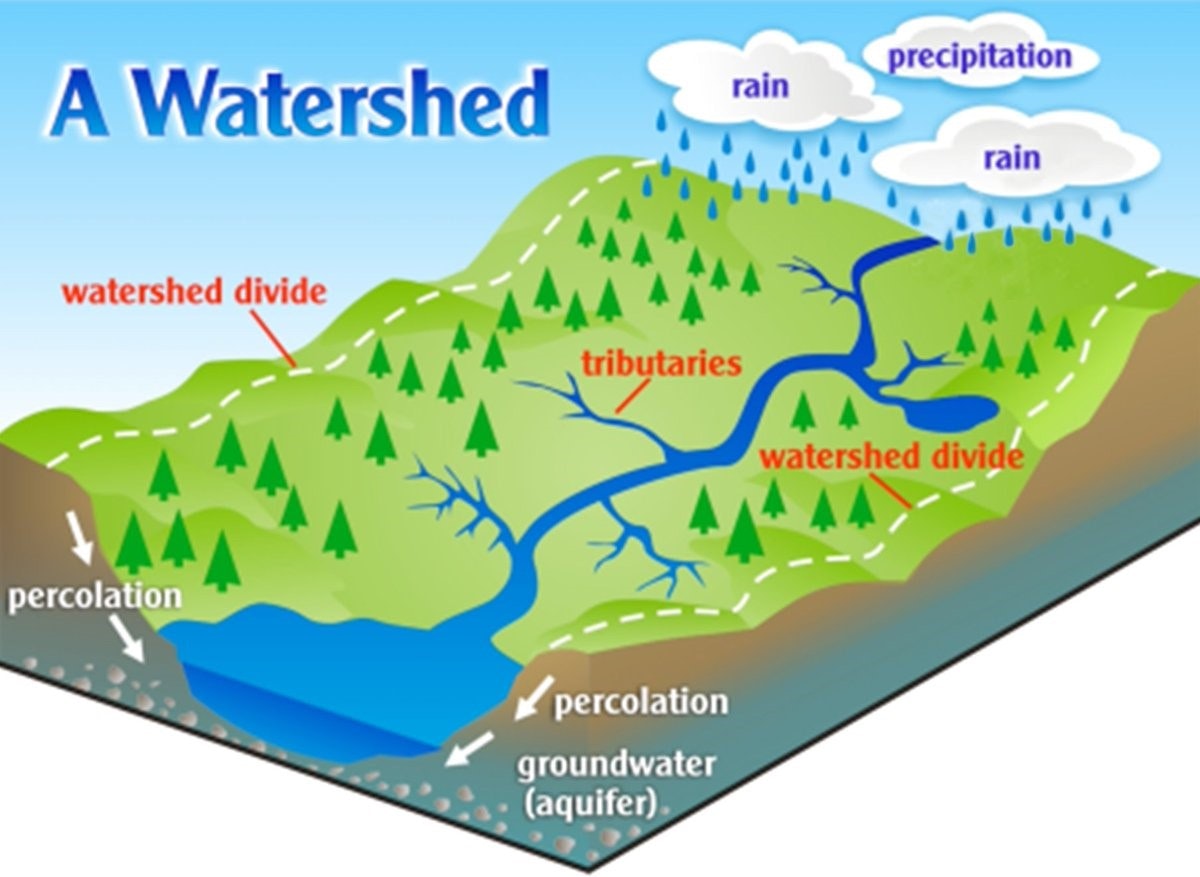What is a Watershed?
We all live in a watershed!

Watersheds are interconnected systems of land, water, air, and the plant and animal species they support—including humans. A watershed is specifically defined as an area of land that is bound by ridges or hills (watershed divide) and creates a basin in which water drains to a common point (river, lake, ocean, etc). Watersheds can be as small as a depression from a footprint in the mud, to the size of the Mississippi River watershed which drains over one-third of the land in the United States!
Why Do We Need Healthy Watersheds?
We are all citizens of a watershed. In many ways, your own health depends on the heath of the watershed. A healthy watershed is a well-balanced system that provides clean air, water, and soil to the people, plants and animals that live in the watershed. Watersheds perform very important jobs such as water and nutrient cycling, groundwater recharge, and collection of rain and snow melt. They also play an important role in the absorption of greenhouse gas emissions, providing healthy soils and habitats for plants and animals, and providing natural areas for people to recreate and enjoy nature.
When our watershed is polluted, the water we rely on for drinking, irrigation, processing etc. is put at risk. Animal species, like the fish we eat, can become contaminated and sick from polluted water. Air pollution affects human health but it also effects the health of the soil, vegetation communities and animals that depend on clean air for life.
What you do upstream effects your neighbors downstream and all the ecosystems along the way. If we pollute our water high in the mountains eventually, it will reach the sea and impact coastal communities and sea life. Your everyday actions can directly affect not only your neighborhood, or your community but also your entire watershed! When a watershed is unhealthy, everything living in it suffers. If we take action to protect our watershed then everything living in it can have access to clean and healthy resources.
What watershed do we live in?
The Santa Ana Watershed drains 2,650 sq miles of land into the 96-mile long Santa Ana River. This entire area of land comprises the Santa Ana Watershed, spanning the counties of Orange, Riverside, Los Angeles, and San Bernardino. The headwaters of the watershed begin at Mt. Baldy, the mountains above Big Bear Lake, and San Gorgonio and San Jacinto Peak. The Santa Ana River drains into the Pacific Ocean at Huntington Beach.


